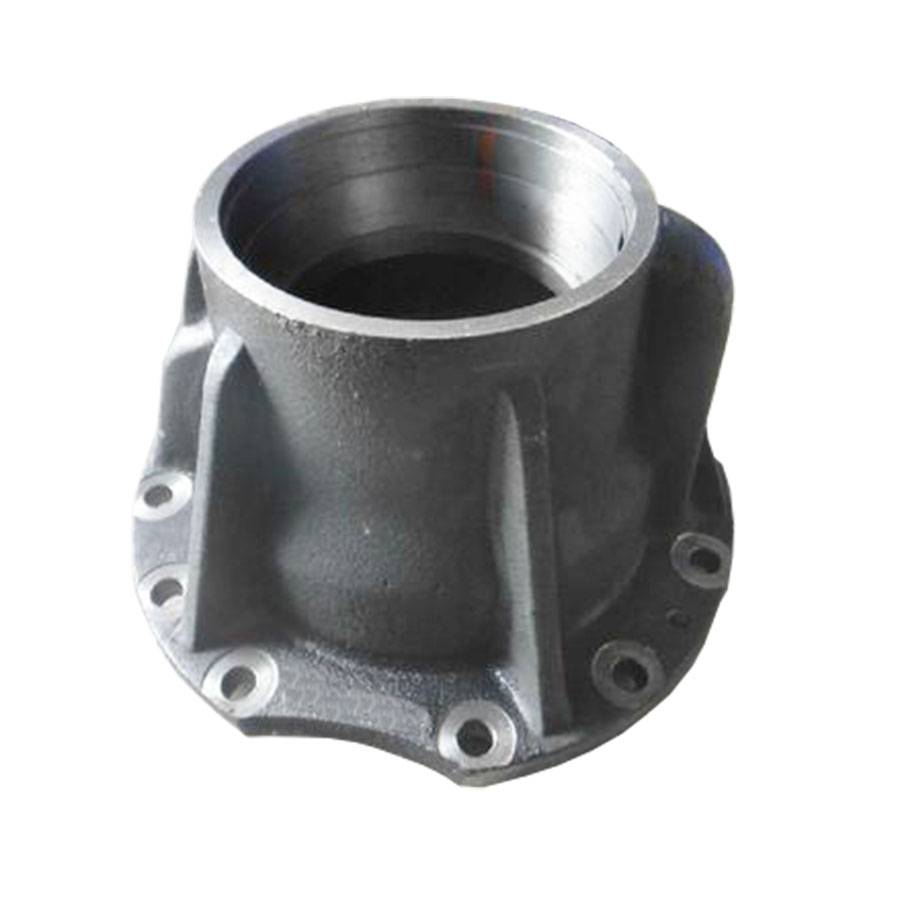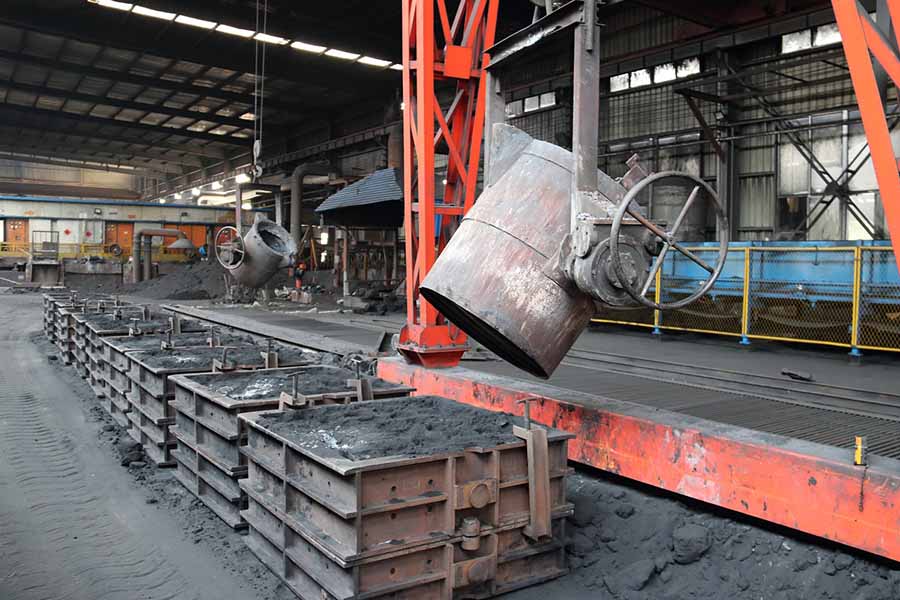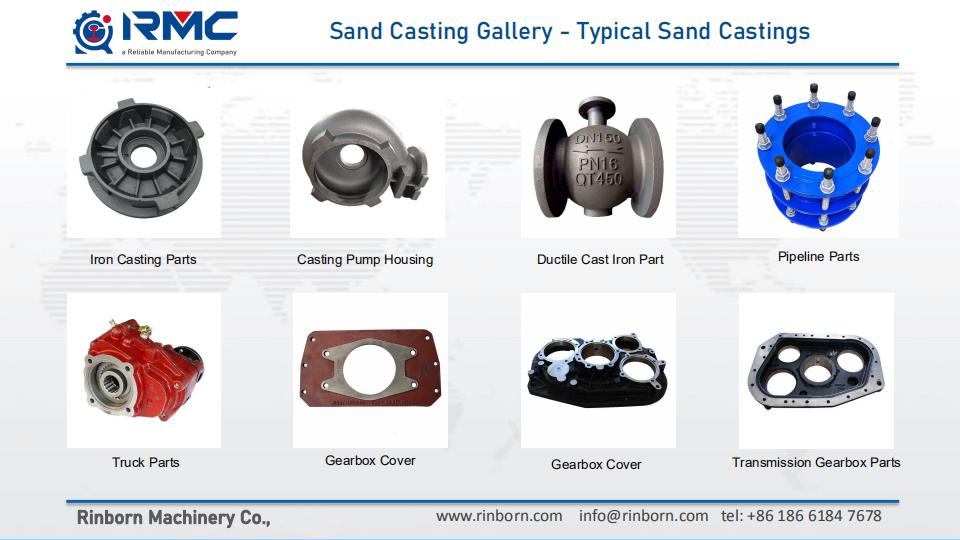
Custom Steel Sand Casting Components
Material: Carbon Steel, Alloy Steel, Stainless Steel Process: Sand Mold Casting Weight: 4.60 kg
Custom Steel Sand Casting Components from China Foundry with CNC Precision Machining, Heat Treatment and Surface Treatment Services.
Custom Steel Sand Casting Components from China Foundry with CNC Precision Machining, Heat Treatment and Surface Treatment Services.
Cast steel refers to the steel used for the manufacture of steel castings. Cast steel should be used when the strength of the casting is relatively high and the use of cast iron cannot meet the requirements. However, the fluidity of molten steel of cast steel is not as good as that of cast iron, so the thickness of the pouring structure should not be too small and the shape should not be too complicated. When the silicon content is controlled at the upper limit, the fluidity of molten steel can be improved. Cast steel can be divided into general engineering cast steel, welded structure cast steel, stainless steel cast steel, and heat-resistant steel cast steel according to its variety and purpose.
Cast steel can be divided into cast alloy steel and cast carbon steel according to its chemical composition, and can also be divided into cast tool steel, cast special steel, engineering and structural casting and cast alloy steel according to its characteristics.
By chemical composition
1. Cast carbon steel. Cast steel with carbon as the main alloying element and a small amount of other elements. Cast carbon steel can be divided into cast low carbon steel, cast medium carbon steel and cast high carbon steel. The carbon content of cast low carbon steel is less than 0.25%, the carbon content of cast carbon steel is between 0.25% and 0.60%, and the carbon content of cast high carbon steel is between 0.6% and 3.0%. The strength and hardness of cast carbon steel increase with the increase of carbon content. Cast carbon steel has the following advantages: lower production cost, higher strength, better toughness and higher plasticity. Cast carbon steel can be used to manufacture parts that bear heavy loads, such as steel rolling mill stands and hydraulic press bases in heavy machinery. It can also be used to manufacture parts that are subject to large forces and impact, such as wheels, couplers, bolsters and side frames on railway vehicles.
2. Cast alloy steel. Casting alloy steel can be divided into cast low alloy steel (the total alloy elements are less than or equal to 5%), cast alloy steel (the total alloy elements are 5% to 10%) and cast high alloy steel (the total alloy elements are greater than or equal 10%).
By use characteristics
1. Casting tool steel. Cast tool steel can be divided into casting tool steel and casting mold steel.
2. Casting special steel. Casting special steel can be divided into cast stainless steel, cast heat-resistant steel, cast wear-resistant steel, cast nickel-based alloy, etc.
3. Cast steel for engineering and structure. Cast steel for engineering and structure can be divided into cast carbon structural steel and cast alloy structural steel.
4. Cast alloy steel. It can be divided into cast low alloy steel, cast medium alloy steel and cast high alloy steel.
304 and 316 cast steel are the most widely used stainless steels. Both are austenitic cast steels, non-magnetic or weakly magnetic. The 430, 403, and 410 are austenitic-ferritic stainless steels with magnetic properties.
In the production of steel castings, cast steel smelting is a key process. Before each pouring, a pre-furnace analysis is required. The proportion of each chemical element must meet the requirements of customers and practical applications.
In order to increase the smelting speed and ensure the quality of castings, ingots with qualified scouring composition are generally used abroad. However, in Chinese foundries, metal materials used for smelting are divided into two types: recycled materials and new materials. Recycled material refers to the pouring and riser system of castings, scrap castings, etc. Before use, the chemical composition and grade should be analyzed clearly, and the surface impurities and oxide scale should be removed by shot blasting or sandblasting, and then set aside, or the recycled material should be smelted and poured into ingots for use. New materials are ingots made by certain grades of metal bars or scraps, as well as commonly used ferroalloys and pure metal materials. The metal bars and ingots of certain grades need to be analyzed for composition and meet the standards, and the size of the bars needs to be consistent with the sizes of the electric furnace and crucible.

▶ Raw Materials of Cast Steel as per standard or customized chemical compositions and mechanical properties.
• Carbon Steel: AISI 1020 - AISI 1060,
• Steel Alloys: ZG20SiMn, ZG30SiMn, ZG30CrMo, ZG35CrMo, ZG35SiMn, ZG35CrMnSi, ZG40Mn, ZG40Cr, ZG42Cr, ZG42CrMo...etc on request.
• Stainless Steel: AISI 304, AISI 304L, AISI 316, AISI 316L, 1.4404, 1.4301 and other stainless steel grade.
▶ Capabilities of Sand Casting moulded by hand:
• Max Size: 1,500 mm × 1000 mm × 500 mm
• Weight Range: 0.5 kg - 500 kg
• Annual Capacity: 5,000 tons - 6,000 tons
• Tolerances: On Request.
▶ Capabilities of Sand Casting by Automatic Molding Machines:
• Max Size: 1,000 mm × 800 mm × 500 mm
• Weight Range: 0.5 kg - 500 kg
• Annual Capacity: 8,000 tons - 10,000 tons
• Tolerances: On Request.
▶ Main Production Procedure
• Patterns & Tooling Design → Making Patterns → Moulding Process → Chemical Composition Analysis → Melting & Pouring → Cleaning, Grinding & Shot Blasting → Post Processing or Packing for Shipment
▶ Sand Casting Inspection Capabilities
• Spectrographic and manual quantitative analysis
• Metallographic analysis
• Brinell, Rockwell and Vickers hardness inspection
• Mechanical property analysis
• Low and normal temperature impact testing
• Cleanliness inspection
• UT, MT and RT inspection
▶ Post-Casting Process
• Deburring & Cleaning
• Shot Blasting / Sand Peening
• Heat Treatment: Normalization, Quench, Tempering, Carburization, Nitriding
• Surface Treatment: Passivation, Andonizing, Electroplating, Hot Zinc Plating, Zinc Plating, Nickel Plating, Polishing, Electro-Polishing, Painting, GeoMet, Zintec
• Machining: Turning, Milling, Lathing, Drilling, Honing, Grinding,
▶ General Commerial Terms
• Main workflow: Inquiry & Quotation → Confirming Details / Cost Reduction Proposals → Tooling Development → Trial Casting → Samples Approval → Trial Order → Mass Production → Continuous Order Proceeding
• Leadtime: Estimatedly 15-25 days for tooling development and estimatedly 20 days for mass production.
• Payment Terms: To be negotiated.
• Payment methods: T/T, L/C, West Union, Paypal.


 русский
русский



